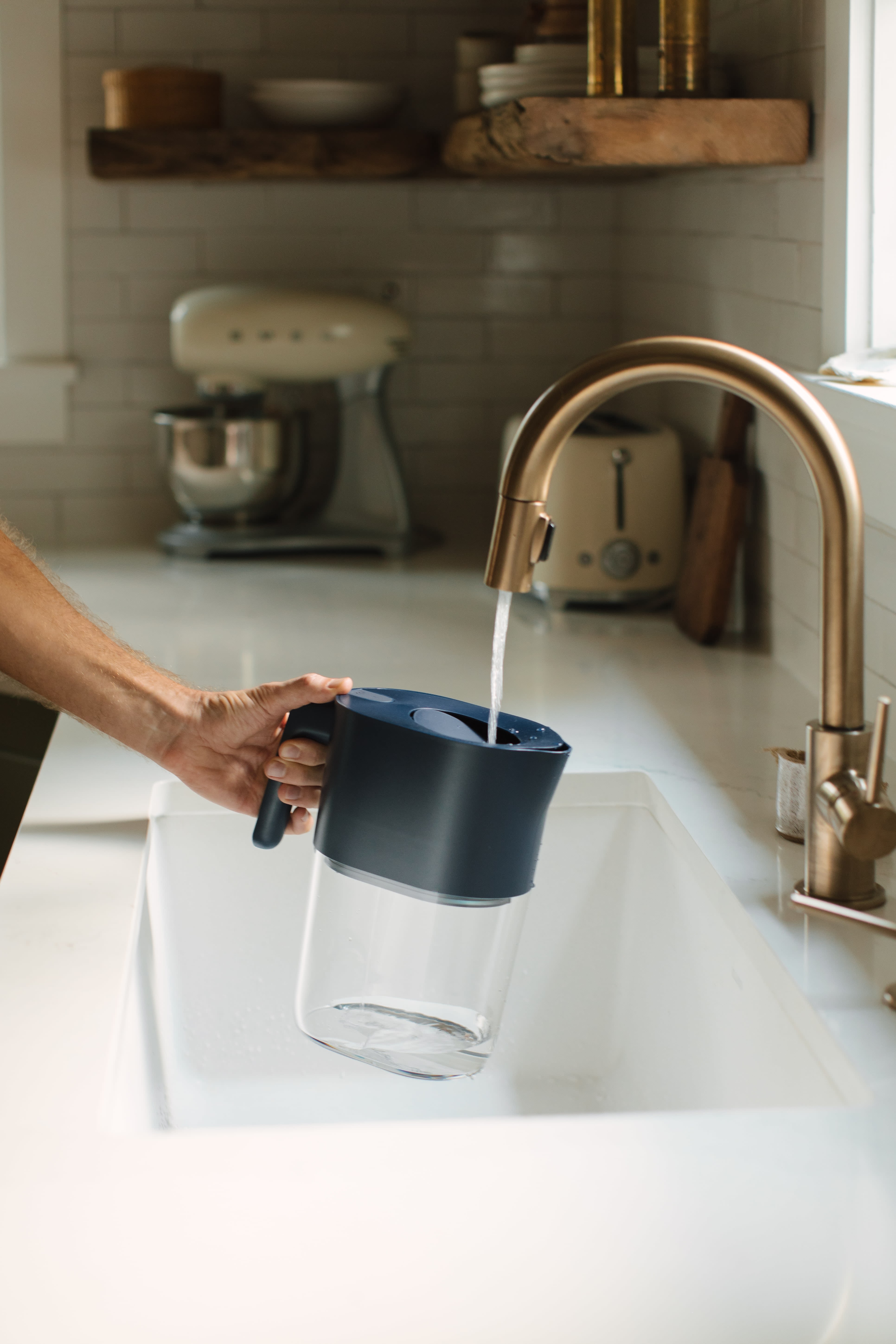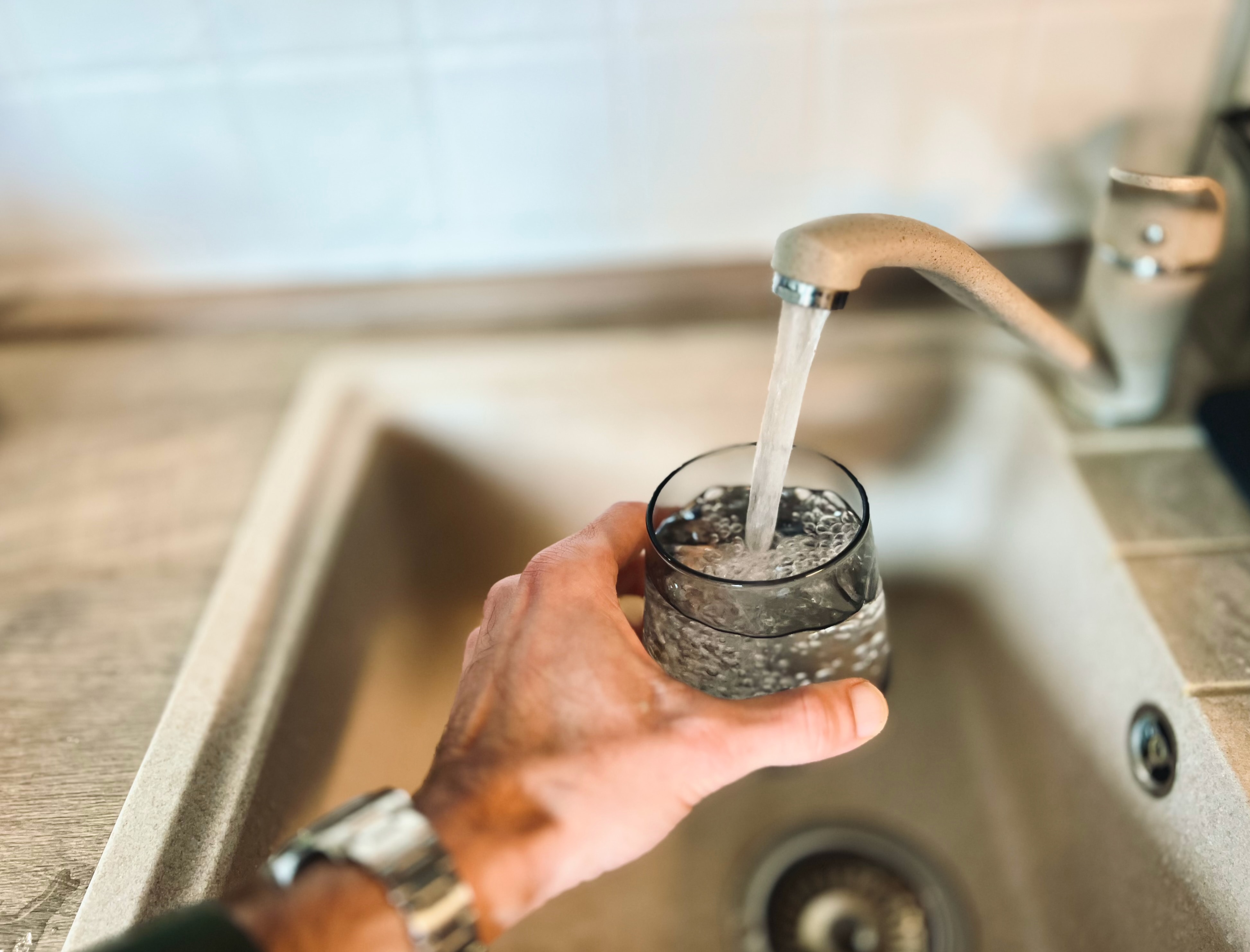Welcome to the corner of the internet where we talk about all things water. If you’ve landed here, you’re either a water-lover or someone wanting more from their tap water. In any case, you’ve come to the right place. Here, we’ll break down the basics of water filtration and tap water needs for the common hydrator.
Always filter your water

Common contaminants like lead, PFAS/PFOA, BPA, pesticides, and even microplastics can be found in tap water, which is why water filtration is so important. Filters are specially engineered to remove these types of physical contaminants, grabbing onto the bad stuff so that what drips into the pitcher is clean water.
Additives like chlorine are commonly used in municipal water supply to prevent bacteria from forming. Since water is susceptible to harmful bacteria, viruses, and other bio-contaminants, this is a good thing. Although, it could make your tap water taste more like pool water, and that’s not ideal for most people.
Most water filters on the market will remove chlorine — at the very least — because it’s one of the chemicals in tap water that people can taste the most. Simply removing chlorine can be enough to improve the taste and make the water more enjoyable.
It’s also common that toxic chemicals like lead, PFAS/PFOA, and BPA can leach into tap water too, which remain tasteless. Our environment is riddled with these, so there’s only one way to get around it. You guessed it—with water filtration. These can be toxic, especially to smaller children because they tend to stay in your system. Some cause developmental issues, cancer, and other diseases. This is probably one of the most important reasons many people should filter their tap water before drinking or cooking with it.
Be on time with filter replacements
It’s a known fact that any kind of filter becomes less effective as contaminants are collected and accumulated within them. From your vacuum cleaner full of dust to your air filter overwhelmed with dust and tiny pollutants, and yes — your water filter, too. Microscopic contaminants are collected and fill the filters up, which is why the best way to ensure your water stays clean is by replacing them on time. For the LARQ Pitcher PureVis™, that is every 2 months or 60 gallons of water; and for the LARQ Bottle Filtered, that’s every 2 months or 40 gallons of water. With the LARQ Pitcher, the wand will flash quickly in orange light to let you know it’s time to change your filter thanks to internal sensors that monitor how much water has gone through the filter. A subscription to filter plans makes staying on top of filter replacements a breeze, too. That way you never have to worry about running out of filters! Plus, if you go on vacation or take a break from your pitcher, you can always skip or edit your next shipments, which makes it super convenient.
Carry a filter bottle for travel
Like we mentioned earlier, tap water can contain contaminants like lead, chlorine, heavy metals, pharmaceuticals and more — same goes for tap water in countries abroad as well. Some may contain higher levels of some things than others, so you might notice the tap water might taste funky to you from, for instance, Chicago, Illinois and Paris, France. One might contain more lead than the other, or more chlorine, which can make the water not only taste bad to you, but it might actually be bad for you.
LARQ Bottle Filtered is a great solution for travel because you can fill up at virtually any tap water source or potable water fountain, and the bottle will filter the contaminants out as you sip. It’s amazing for people who are picky about their water and don’t want to spend money on plastic bottled water. We recommend checking local water quality for common contaminants to ensure that your filter bottle can protect you from what’s found in the tap water. We would not recommend using the LARQ Bottle Filtered alone if you are concerned about bacteria and viruses, which leads us to the next topic…
Do not use filters with just any water
Filters are meant to be used with tap water that is free from bio-contaminants like E.coli or salmonella. These microorganisms have minds of their own, so a mere filter will not keep them from gathering in your water. These waterborne bacteria and viruses can cause illness, and in severe cases, death. So do your research before you embark on your journey.
The filter can remove physical contaminants like heavy metals and chlorine, but it won’t prevent you from getting sick from bio-contaminants. LARQ PureVis™ bottles are third-party tested and effective against E.coli and Salmonella in Adventure Mode (a 3-minute UV-C purification cycle) so this can be helpful in situations where E.coli and Salmonella are present.
Since the PureVis™ cap and Filtered Cap are interchangeable, we would recommend hitting the water with the PureVis™ Cap in Adventure Mode first, then following with the Filtered Cap to remove other contaminants as you sip.
Environmentally conscious
Going the water filter bottle route will be the best thing you can do for your wallet and Mother Nature. Because the LARQ Bottle Filtered offers portable water filtration, you don’t need to resort to overpriced bottled water every time you travel or go out on the town. You’ll have more freedom to fill up in different places from public water fountains and other potable water sources—including from some hotel sinks.
Find water quality reports
LARQ Bottle Filtered and LARQ Pitcher PureVis™ can transform your drinking water, but always check the water quality before using any water filtration system. You want to make sure you are purchasing the right product for your needs. Let’s say you’re traveling to Rome, Italy — be sure to check what the most prevalent contaminants are to see if LARQ Bottle Filtered can help you stay hydrated on your holiday. (Hint: we actually have an article detailing Rome’s water quality here.)
